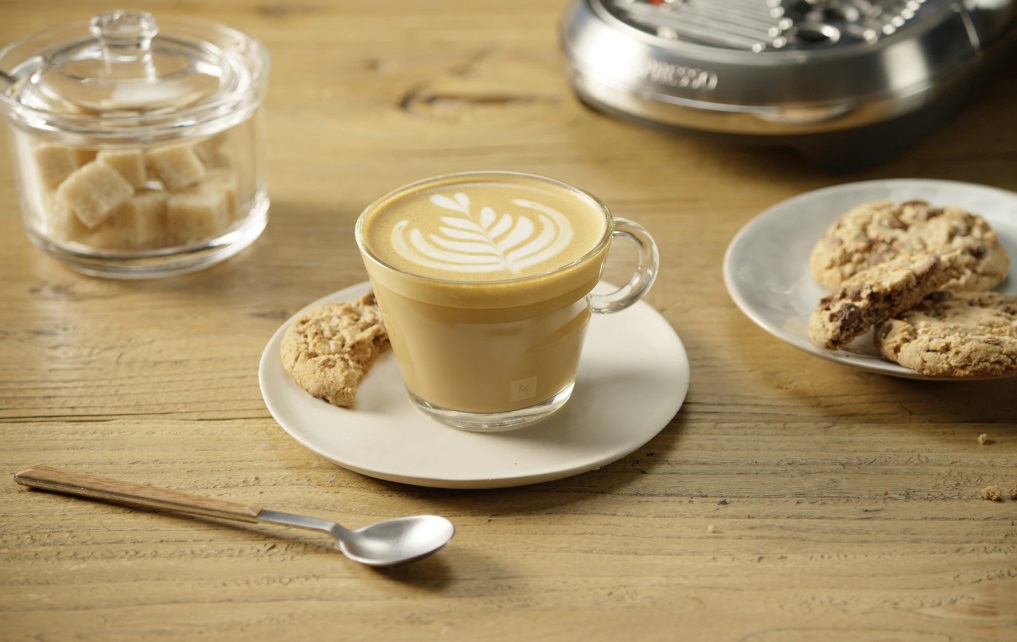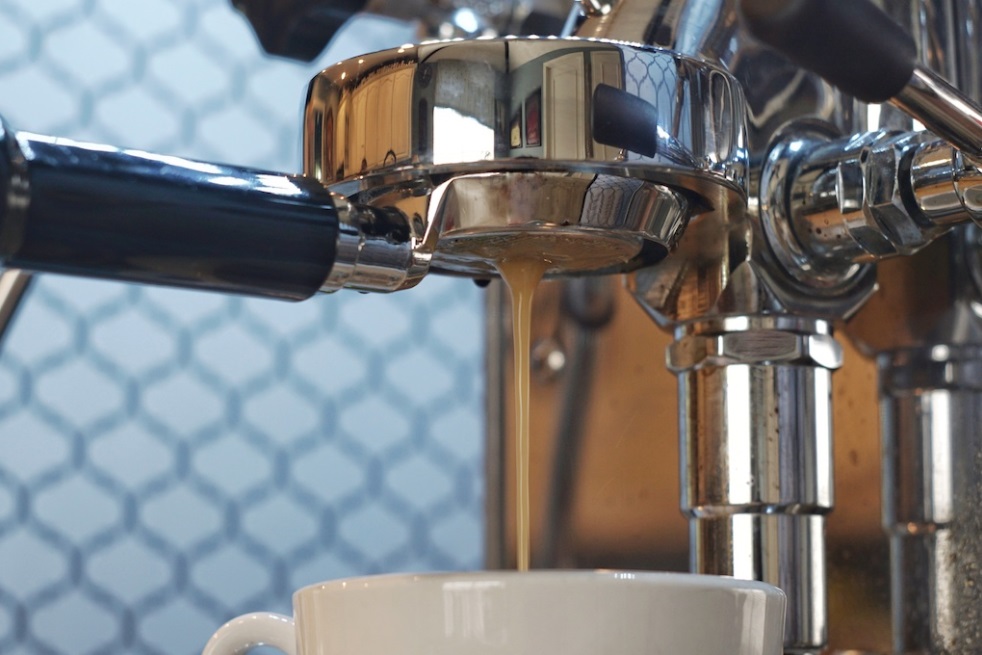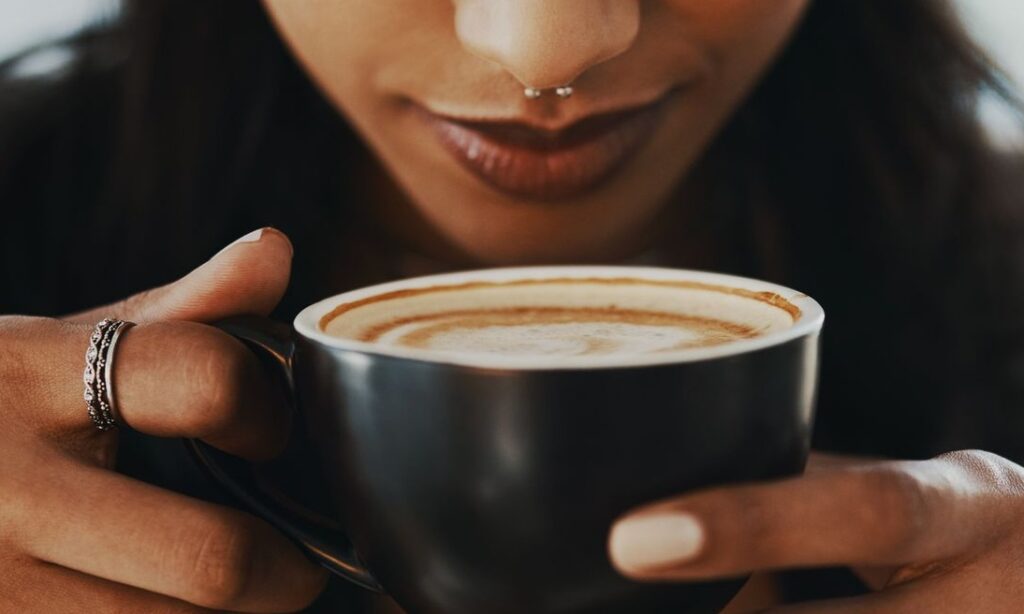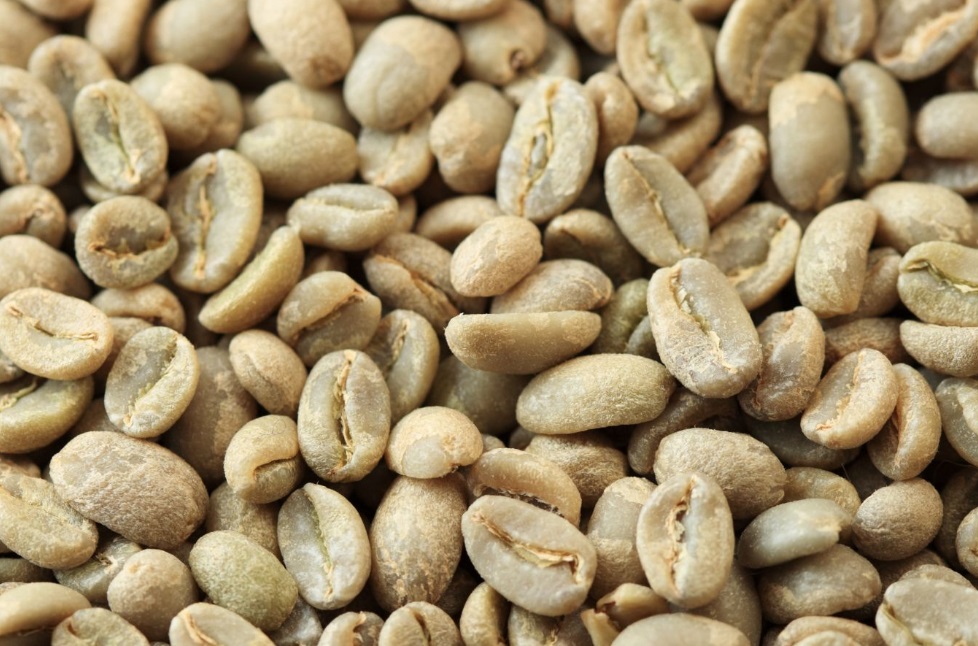
Hey friends! It’s Nancy, and today I want to share with you my latest coffee discovery — white coffee beans. When I first heard about it, I thought, “What even is that? White coffee? Sounds bizarre!” But, of course, curiosity got the best of me, and I decided to dive deeper into it.
At first, I thought these were special beans grown in specific regions. In general, as you understood, I created a whole magic from this drink. It turned out to be much simpler. The secret lies in the roasting process. The beans are roasted at a much lower temperature and for a very short period. I’m sure you’ve noticed cracks on coffee beans before. This happens because of the high temperature.
In white coffee, the beans don’t crack because the lower temperature and shorter roasting time prevent it. This process leads to the fact that the beans become light and offer a completely different taste profile. Previously, it was popular mainly in the Middle East, where it is flavored with various spices, but now I increasingly see this drink in coffee shops in the USA.
My First Experience: Nutty and Herbal Notes
I remember my first sip of white coffee like it was yesterday. Honestly, it was a shock to my taste buds! Instead of the familiar bitterness, I was met with a light, nutty, slightly acidic flavor, with none of the strong roastiness I usually expect from my morning brew. For a moment, I thought, “Wait, is this even coffee?”
The unique taste comes from the fact that white coffee doesn’t undergo the typical caramelization process. It stays in a more “raw” state, which preserves some of the natural flavors that darker roasts lose during the roasting process. It felt like discovering something both new and familiar. If I had to describe it, I’d say it’s like a cross between coffee and a strong nutty beverage.
White coffee beans: More Caffeine or Just a Myth?
Now, there’s this popular myth going around that white coffee contains significantly more caffeine than regular coffee. The truth? It does have a bit more caffeine — about 2-5% more, but it’s not as dramatic as people might think. I personally didn’t feel an overwhelming caffeine buzz. However, if you prefer a slightly stronger kick without the bitterness, white coffee might become your new best friend!

Roasting Process
The roasting process is fascinating! Since the beans never reach that typical “crack,” they don’t develop the usual caramelized sweetness or deep flavor we’re used to in darker roasts. White coffee beans stay in this almost untouched state, which means the flavors are incredibly unique. To brew white coffee, I’ve found that methods like an espresso machine or drip coffee maker work best, as they help to bring out the delicate notes. I’ve tried using a French press, but the results weren’t as impressive.
My tip: if you’re a bit hesitant about jumping straight into white coffee, try blending it with your usual dark roast beans. It’s a great way to balance the flavors and ease into the world of white coffee without it being too drastic.
How to brew white coffee: 2 Best Methods
How to brew white coffee? If you are as dedicated a coffee enthusiast as I am, you are probably also eager to try new flavors and explore new ways of brewing your favorite nectar. So here comes white coffee, a very elegant brew that has a unique, light-roast charm.
This coffee stands out with its unique roasting process, resulting in exceptionally light and flavorful roasted coffee. This roasted coffee retains the natural characteristics of green coffee beans, freeing their nuanced flavors while subduing the heavy influence of the roasting heat, unlike traditional coffee.
The hallmark of white coffee is its pale color, almost resembling the hue of green coffee beans.
I am going to provide you with 2 methods of brewing white coffee that are easy and don’t require any investment, as the equipment used will be the same that you use when making traditional coffee.
So, grab your favorite mug and learn how to make yourself a cup of steaming goodness.
Brewing white coffee in your espresso machine
Let me guide you through this uncomplicated process of creating a white roast coffee drink one step at a time.
- Step #1: select the right beans. Begin by choosing high-quality white coffee beans. Opt for beans known for their nuanced flavors and ensure they are fresh and ground properly.
- Step #2: prepare your espresso machine. Clean your espresso machine thoroughly to eliminate any residual flavors from previous regular coffee brews. This step ensures that the delicate notes of the white coffee beans take center stage. Set the machine to a lower temperature than usual, as white coffee requires a gentler roasting process.
- Step #3: measure the coffee grounds. For a single shot of white coffee, measure around 1 to 1.5 tablespoons of finely ground white coffee beans. Adjust the quantity to your taste preferences. Remember, the light roast means you’ll need a slightly higher coffee-to-water ratio than with dark-ground coffee.
- Step #4: tamping the coffee. Place the measured coffee grounds into the portafilter and tamp them down gently. The goal is to create an even surface to ensure uniform extraction during the brewing process. A light tamp is crucial to avoid over-packing the grounds. This is a similar step to regular coffee making.
- Step #5: brewing the white coffee. Insert the portafilter into the machine and start the brewing process. The light roast of the white coffee beans requires a shorter brewing time than dark roasts. Aim for a smooth, golden extraction that captures the essence of the beans without overpowering their subtle flavors.
- Step #6: savoring the result. Once your espresso machine works its wonders, you’re left with a cup of white coffee that’s as elegant as it is flavorful. Take a moment to appreciate the pale hue and the aromatic notes.

Brewing white coffee with ease using a drip coffee maker
Here’s another method but it is no more complex than the previous one.
- Step #1: white coffee bean selection. The first steps of this method are aligned with the first method. The key to a proper selection is to pick beans that offer subtle nuances in flavor, as the extremely light roast will preserve these characteristics.
- Step #2: grinding to perfection. Grind your chosen white coffee beans to a medium coarse ground coffee, striking the right balance to optimize the extraction process. This ensures that the delicate flavors are infused into your cup without overpowering bitterness.
- Step #3: coffee-to-water ratio. Measure your ground white coffee, aiming for approximately one to two tablespoons per six ounces of water. Adjust this ratio based on your taste preferences. Remember, white coffee is roasted very lightly and often benefits from a slightly stronger brew.
- Step #4: water temperature matters. Preheat your drip and use water that’s just below boiling point. The lower temperature is essential to maintain the delicate nature of the white coffee roast during the brewing process.
- Step #5: loading the machine. Place the measured white coffee grounds into the filter of your drip. Ensure an even distribution for consistent extraction. Start the brewing process.
- Step #6: patience and precision. White coffee requires a bit more patience than its darker version. Allow the drip to work, ensuring a gradual extraction that captures the essence of the light roast. The result should be a brew that’s aromatic and nuanced.
- Step #7: serving and enjoying. As the brewing process concludes, pour yourself a cup of freshly brewed white coffee. Feel free to enjoy black coffee or add your favorite creamer for an extra layer of indulgence.

My 5 Favorite Brands and Reviews
After that first encounter, I couldn’t stop thinking about white coffee! I’ve since explored a few different brands, and here are my absolute favorites that I think you’ll love.
The first brand that completely won me over was Poverty Bay’s White Tornado. It has this perfect nutty flavor with a slight acidity. If you’re into smooth and light coffee, this is the one for you. It’s especially great for lattes — I like to mix it with almond milk, which really brings out those nutty notes even more.
Next up is Wired Willey’s White Coffee, which is a game-changer for those who aren’t fans of bitterness. This white coffee is so soft and smooth, I don’t even need to add sugar. The flavor is balanced and enjoyable any time of day.
Another brand I’ve come to love is Caffe Appassionato White Coffee. It’s a bit more herbal and earthy in flavor, offering a more exotic experience. If you’re looking for something with a natural, almost fresh flavor, this one’s worth a try.
For those who prefer organic coffee, Touch Organic is a fantastic option. It offers a clean, natural taste with subtle nutty undertones, making it a perfect pick for anyone who values high-quality, organic coffee beans.
Finally, Cameron’s Coffee offers a great balance of smoothness and richness. Their white coffee has a gentle sweetness with slight earthy notes, and it’s been my go-to for starting my day with something a little different.
Each of these brands brings something unique to the table, and I love switching them up depending on my mood. If you’ve never tried white coffee before, one of these options is bound to become your new favorite.
My Little Secret: I look forward to the morning to drink coffee with a secret ingredient that I have really fallen in love with lately – almond milk. It’s just an incredibly subtle nutty flavor that makes strict coffee tender and even a little relaxing. You want to wrap yourself in a blanket, light a candle and enjoy the drink with a new book. If you are interested in trying something new, I highly recommend trying white coffee with almond milk. You will be surprised how well they go together!
Exploring the benefits of white coffee
Many traditional coffee lovers are addicted to the rich, dark hues of traditional coffee and are not ready for a more nuanced flavor of white coffee. As for me, I am open to experiments, so I tried this light roast coffee and never looked back. I became an even bigger fan after finding out all the potential health perks.
So let’s explore the reasons why embracing white coffee might just be the key to elevating your coffee experience.
Lower acidity levels
White coffee, with its light roast, tends to have lower acidity compared to dark coffee. This can be a game-changer for individuals who find high-acid coffees harsh on their stomachs. They can prepare white coffee and enjoy a cup that will provide a smoother experience without compromising on flavor.
Retained antioxidants
The fact that white coffee is roasted very lightly helps to preserve a higher concentration of antioxidants present in the coffee beans. Antioxidants play a crucial role in neutralizing free radicals in the body, contributing to overall well-being.
Enhanced caffeine content
White coffee might be the answer for those seeking a gentle caffeine boost. The light roasting process retains more caffeine compared to darker roasts. This means you can savor the exhilarating impact of caffeine but skip the excessive bitter taste often associated with stronger brews.
Nuances in flavor
Due to the specific roasting rules, white coffee allows the natural flavors of the coffee beans to prevail in the flavor of the drink. This results in a nuanced flavor that might get overshadowed in darker roasts. From floral notes to hints of fruitiness, white coffee offers a plethora of tones with every sip.

Versatile pairing options
The mild flavor profile of white coffee makes it excellent for experimentation. Whether you prefer black for a pure coffee experience or enjoy adding your favorite creamers or sweeteners, white coffee taste ensures its versatility: it can cater to a wide range of taste preferences.
Lower oil content
Light roasting naturally leads to lower oil content compared to dark roasts. This can be beneficial for those aiming to reduce their fat intake while still enjoying the comforting ritual of a daily coffee.
A softer caffeine kick
While white coffee maintains a respectable caffeine content, its gentler roasting process can provide a more gradual and sustained release of caffeine. This can be particularly appealing for individuals who prefer a milder energy boost throughout the day.
Where to find and indulge in white coffee?
The good news is that this refined brew is increasingly finding its way onto the shelves of various establishments. Here are some places where you can indulge in this elegant cup of caffeine bliss.
Local coffee shops
Your local coffee shop may have embraced the trend of white coffee. Such establishments often source high-quality white coffee beans, ensuring a delightful cup for their patrons.
Ask your local barista about the availability of traditional white coffee on their menu or if they can prepare a custom white coffee brew for you.
Specialty coffee retailers
Explore specialty coffee retailers that prioritize unique and high-quality coffee offerings. These retailers may carry white coffee beans. Check online or visit artisan coffee shops to discover the diverse world of coffee beans. You may be lucky and find the perfect beans for white coffee.
Health food stores
Health-conscious individuals seeking a coffee option that fits their dietary preferences often turn to white coffee. Some health food stores or organic markets may carry a selection of white coffee bean, catering to those who prioritize a gentler and less acidic coffee experience.
Online coffee subscription services
If you’re keen on exploring a variety of coffee options, consider subscribing to an online coffee subscription service. Some services curate monthly shipments of unique and artisanal coffees, and white coffee may occasionally find its place in these curated collections.
What is Malaysian white coffee?
Ipoh white coffee, which is also called Malaysian white coffee, is a traditional coffee drink that is very common and well-liked in that country and took its name Ipoh after a Malaysian town. The uniqueness of Malaysian white coffee is in the roasting procedure, which implies the addition of palm oil margarine.
It’s commonly consumed with condensed milk. Traditional coffee in Malaysian style is prepared a little differently. Apart from margarine, the roasting also includes sugar addition, which impacts the taste of the drink, making it nutty and filled with earthy tones.

Final thoughts
White coffee is quickly winning over the hearts of devoted coffee fans. One of the reasons is the nuanced flavors that it offers due to the mild roasting process that saves the beans’ natural nuances.
Whether you choose to explore the local coffee shops that embrace the latest trends and sell white coffee or try your hand at crafting this brew in the comfort of your home, I can guarantee that the whole process will be exciting, and drinking white coffee that you brewed yourself or ‘hunted down’ in the neighborhood will be worth the fuss.
So, open your mind and try something new. It may surprise you how much you’ll enjoy it. The beauty of white coffee is that it’s simple but elegant and flavorful, and it allows you to indulge in its mild but nuanced taste.
FAQ
Can I brew white coffee at home?
Yes, you can brew white coffee at home with white coffee beans and a brewing method such as an espresso machine or drip coffee maker. How to brew white coffee? Adjust the grind size and brewing parameters to accommodate the light roast of white coffee beans.
How do you make a white coffee?
To make white coffee:
– Choose high-quality white coffee beans.
– Grind to a medium coarseness.
– Use an espresso machine or drip for brewing.
– Adjust the coffee-to-water ratio for your taste.
– Shorten brewing time for the light roast.
– Consider adding milk or other preferred creamers.
What is the process of white coffee?
White coffee involves selecting high-quality beans, undergoing a light roasting, grinding, brewing in an espresso machine, or drip with a shorter brewing time. Optionally, sweeten with condensed milk or add almond milk for a special tone. Enjoy the mild taste and nuanced flavors of the trendy drink.
Can you make white coffee in a drip?
Yes, you can make white coffee in a drip. Simply use high-quality white coffee beans, grind them to a medium coarseness, adjust the coffee-to-water ratio, and let your drip do the rest. Optionally, add sweetened condensed milk or other preferred creamers for added flavor.

Hello, coffee enthusiasts! I’m Nancy Gregory, a seasoned coffee sommelier eager to share the exquisite world of coffee with you. I love coffee with every fiber of my soul and I know a lot of interesting information about beans and coffee brewing methods that I want to share with you.